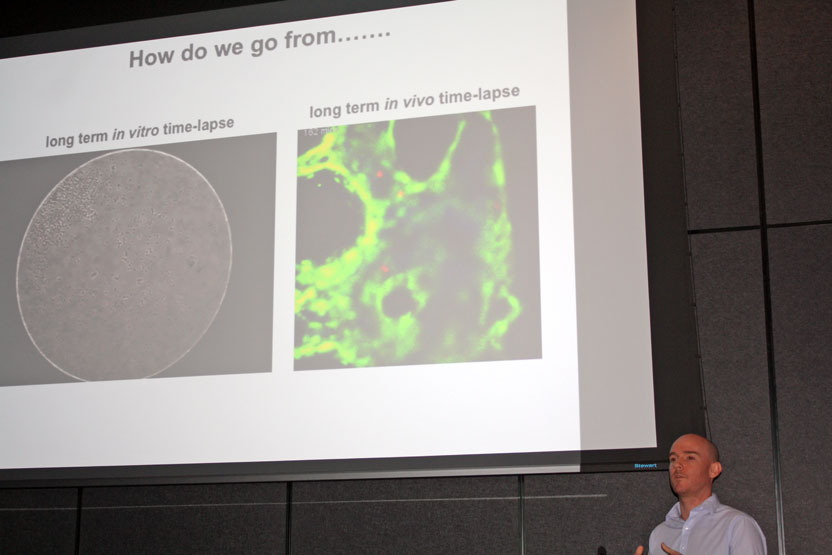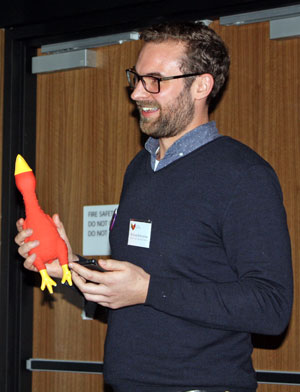Carolyn de Graaf
Walter and Eliza Hall Institute

At the end of May, postdocs from all around Melbourne converged on the Victorian Comprehensive Cancer Centre (VCCC) for the inaugural VCCC Postdoctoral Symposium. This year’s theme was New Frontiers in Cancer Research. The postdoc associations of Peter MacCallum Cancer Centre and The Walter and Eliza Hall Institute, with the support of their institutes and the VCCC, worked together to create this symposium to increase collaboration and exchange of ideas within the Victorian postdoc community.

Ed Hawkins from WEHI set the standard for the day with the first keynote talk. Cell fate tracking has evolved immensely from when he first started his career. Then high throughput meant getting a second student to track microscope images of cells dividing. Now he has moved from in vitro to in vivo, with high resolution images allowing cells to be algorithmically tracked over time through 3D reconstructions of the bone marrow, resulting in spectacular movies of cancer spreading minute by minute.
Susan Clark from the Garvan Institute and Ron Firestein from the Hudson Institute of Medical Research gave the other keynote presentations, each focusing on different aspects of the epigenetics of cancer. Susan Clark discussed how the 3D organisation of the genome is perturbed in cancer and Ron Firestein explained how the epigenetic disregulation in bowel cancer provides therapeutic opportunities.
The postdoc talks started off strongly with the triple Clares—Clare Slaney, Clare Fedele and Clare Weeden—presenting their research. Speakers were kept to strict time by their choice of rubber chicken, pig or duck. [Ed. What an excellent idea!] Unfortunately for the session chairs, the speakers did an excellent job of keeping to time, and they were rarely able to quack anyone off stage.
There was some excellent research presented by postdocs. Highlights were Mitchell Lawrence of Monash University, winner of best presentation, and Clare Slaney of Peter Mac, runner up best presentation. Mitchell has developed preclinical models from rapid autopsy specimens, and used these to test new prostate cancer therapies. Clare presented her work overcoming the challenges of adapting cancer immunotherapy to solid tumours. Dustin Flanagan of the University of Melbourne took home the poster prize for his work targeting components of the Wnt pathway in gastric cancer and Jessica Beach of Peter Mac gave the best speed science talk, summing up her work investigating the mechanisms of chemotherapy resistance in ovarian cancer in five minutes.
The medical research community has now recognised how important it is to connect research with community experiences of disease. Consumers, who may have suffered a disease themselves or have cared for someone with the disease, are the ultimate users and funders of medical research, so researchers are trying to find more ways to involve them in all stages of research. The organising committee invited several consumers to the symposium and they selected a prize for best presentation. It was awarded to Hendrika Duivenvoorden of the La Trobe Institute for Molecular Science. Her research has identified stefin A as a myoepithelial protein that suppresses the transition from ductal carcinoma in situ to invasive cancer in breast cancer, and has potential as a prognostic marker.
After a full day of inspiring science, everyone gathered for a drink and a chat in the spectacular surrounds of the VCCC. Stay tuned for the next postdoctoral symposium to hear about even more great science!
© 2025 Australian Academy of Science